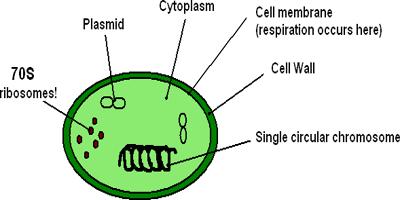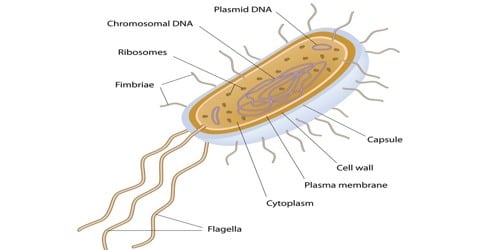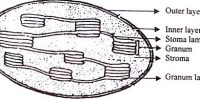The cell wall is present in all prokaryotes cells. The genetic material is naked, i.e. not enveloped by a nuclear membrane.
Ribosomes Bodies: In prokaryotes cells, ribosomes are associated with the plasma membrane of the cell. They are the protein builders or the protein synthesizers of the cell. They are about 15 nm by 20 nm in size and are made of two subunits – 50S and 30S units which when present together form 70S prokaryotic ribosomes. (S stands for the rydberg coefficient which is a function of their size and shape, and determined by their rate of sedimentation in a centrifuge). Ribosomes are the site of protein synthesis. They are found in many places around a eukaryotic cell. They are like construction guys who connect one amino acid at a time and build long chains. Several ribosomes may attach to a single mRNA and form a chain called polyribosomes or polysome. The ribosomes of a polysome translate the mRNA into proteins. You might find them floating in the cytosol. Since there are no membrane-bound organelles in prokaryotes, the ribosomes float free in the cytosol. Those floating ribosomes make proteins that will be used inside of the cell.

Inclusion bodies: Inclusion bodies are the reserve materials stored in the cytoplasm of prokaryotic cells. Reserve material in prokaryotic cells is stored in the cytoplasm in the form of inclusion bodies. These are not bounded by any membrane system and lie free in the cytoplasm. e.g. phosphate granules, cyanophycean granules, and glycogen granules. These contain organic compounds such as starch, glycogen or lipid and act as food reserves. Many granular structures known as inclusion bodies are found in the cytoplasm of certain bacteria. Gas vacuoles are found in blue-green and purple and green photosynthetic bacteria. Some sulfur and polyphosphate containing bodies are also found and are known as volutin or metachromatic granules.














